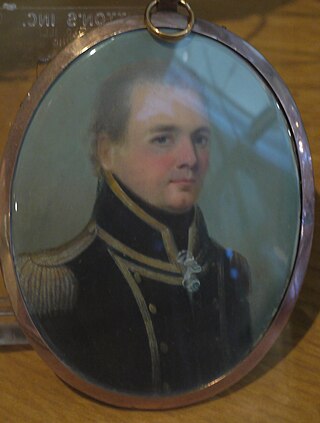Related Research Articles
Several ships and one submarine of the Royal Navy have borne the name HMS Dreadnought in the expectation that they would "dread nought", i.e. "fear nothing". The 1906 ship, which revolutionized battleship design, became one of the Royal Navy's most famous vessels; battleships built after her were referred to as 'dreadnoughts', and earlier battleships became known as pre-dreadnoughts.
The Royal Navy has used the name Comet no fewer than 18 times:
Twelve ships of the Royal Navy have been called HMS Jason, after the Greek mythological character Jason:
Nineteen ships of the Royal Navy have been named HMS Lion or HMS Lyon, after the lion, an animal traditionally associated with courage, and also used in several heraldric motifs representing England, Scotland and the British Monarchy. Another ship was planned but never completed:
Many ships of the Royal Navy have been named HMS Garland. The name dates back to 1242, being the oldest confirmed ship name in the Royal Navy.

HMS Pickle was a topsail schooner of the Royal Navy. She was originally a civilian vessel named Sting, of six guns, that Lord Hugh Seymour purchased to use as a tender on the Jamaica station. Pickle was at the Battle of Trafalgar, and though she was too small to take part in the fighting, Pickle was the first ship to bring the news of Nelson's victory to Great Britain. She also participated in a notable single-ship action when she captured the French privateer Favorite in 1807. Pickle was wrecked in 1808, but without loss of life.
Six ships of the Royal Navy have been named HMS Foxhound. A seventh was planned but never completed:
Nineteen ships and a shore establishment of the Royal Navy have been named HMS Drake after Sir Francis Drake or after the drake:
Numerous Royal Navy vessels have been named HMS Dolphin after the dolphin.
Nine ships of the Royal Navy have been named HMS Emerald.
Eight ships of the Royal Navy have borne the name HMS Caroline:

Captain John Richards Lapenotière was a British Royal Navy officer who, as a lieutenant commanding the tiny topsail schooner HMS Pickle, observed the Battle of Trafalgar on 21 October 1805, participated in the rescue operations which followed it and then carried the dispatches of the victory and the death of Admiral Nelson to Britain.
Nine ships of the Royal Navy have borne the name HMS Falmouth, after the town of Falmouth:
Sixteen ships of the Royal Navy have borne the name HMS Wolf or HMS Woolf, after the mammal the wolf:
Nine ships and one shore establishment of the Royal Navy have been named HMS Wasp, with one other government vessel using the name:
Five ships of the Royal Navy have been named HMS Eclair:
Eleven ships of the Royal Navy have borne the name HMS Firebrand.
Six ships of the Royal Navy have borne the name HMS Whiting, after the common name for Merlangius merlangus, a species of fish:
Ten ships of the Royal Navy have borne the name HMS Renard, or HMS Reynard, after the French for fox, and the anthropomorphic figure of Reynard:
References
- Colledge, J. J.; Warlow, Ben (2006) [1969]. Ships of the Royal Navy: The Complete Record of all Fighting Ships of the Royal Navy (Rev. ed.). London: Chatham Publishing. ISBN 978-1-86176-281-8.
- Peter Goodwin, The Ships of Trafalgar (Naval Institute Press, 2005), p. 154.
- W.E. Ward, The Royal Navy and the Slavers (Pantheon, 1969), p. 135.